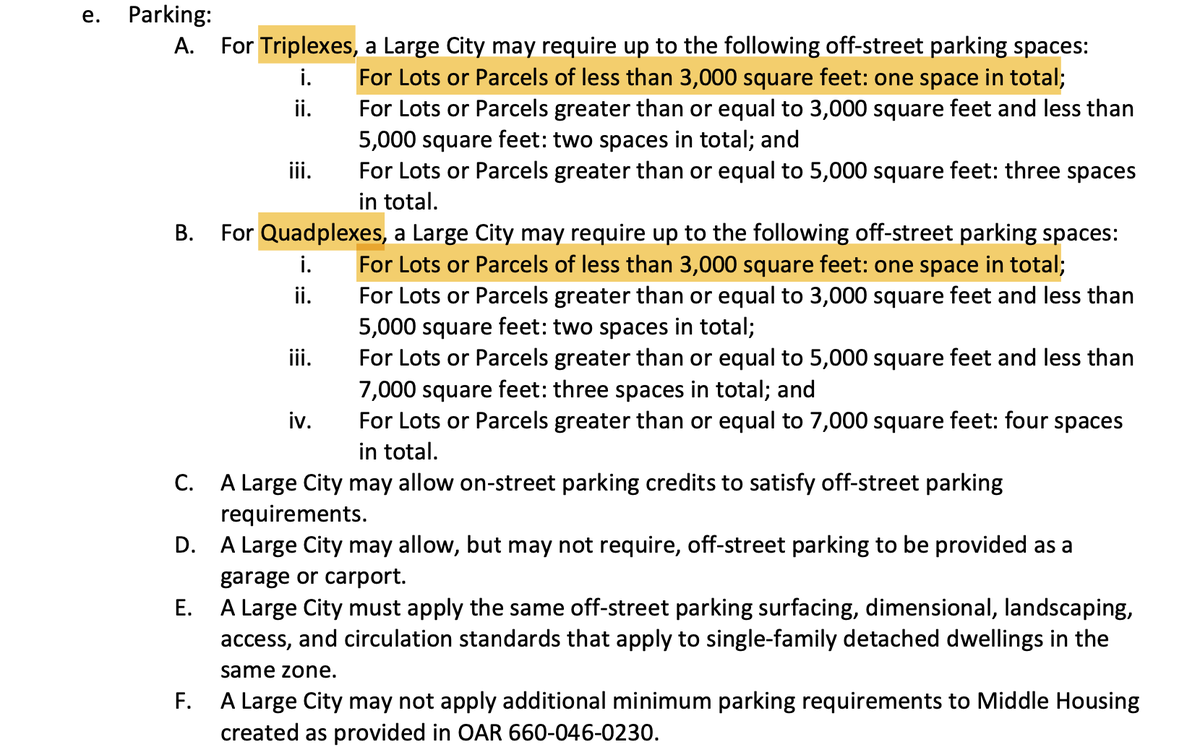
This (⬇️)strategy of "complying" with CA's housing law via economically prohibitive inclusionary zoning is sure to become very popular unless @GavinNewsom & @California_HCD put the kibosh on it soon.
Fortunately, they (probably) have authority to stop it. Read on.
1/
Fortunately, they (probably) have authority to stop it. Read on.
1/
https://twitter.com/JalbyMD/status/1368067826695557125
The strategy will be popular b/c it allows city to comply on paper w/ multifamily zoning requirements while propitiating wealthy homeowners who don't want new apts built and nonprofits that want to buy sites w/o competition from for-profit developers.
2/
2/
(For wealthy homeowners, apartment development by nonprofits isn't very threatening b/c lack of funds will keep nonprofits from developing more than a handful of sites.)
3/
3/
Cities may argue that state law tacitly ratifies high IZ requirements, at least for sites that housing element designates as suitable for low-income housing. (For most part, these are the only sites that cities must zone for MFH.)
4/
4/
E.g., Housing Element Law says cities that must rezone for fair share of affordable housing must allow 20% low-income projects as of right. SB 35 says cities not making adequate progress toward low-income target must permit 50% low-income projects as of right. And...
5/
5/
...most critically, AB 1505 only requires state "feasibility" review of local IZ ordinance (>15% IZ) if city has failed to hit at least 75% of its above-moderate-income target.
leginfo.legislature.ca.gov/faces/billNavC…
6/
leginfo.legislature.ca.gov/faces/billNavC…
6/
To be sure, HCD's housing element Building Blocks tell cities to "analyze" IZ requirements as potential "constraint" to housing development, but this guidance doesn't (now) require cities to demonstrate econ. feasibility of their IZ requirements.
hcd.ca.gov/community-deve…
7/
hcd.ca.gov/community-deve…
7/

May @California_HCD go further? Yes!
SB 6 (2018, postdating AB 1505) authorizes HCD to issue "standards, forms, and definitions" for housing elements' analysis of constraints. papers.ssrn.com/sol3/papers.cf…
8/
SB 6 (2018, postdating AB 1505) authorizes HCD to issue "standards, forms, and definitions" for housing elements' analysis of constraints. papers.ssrn.com/sol3/papers.cf…
8/
HCD *could* use this authority to require cities (1) to show general econ. feasibility of development of sites that city represents (though housing element) as suitable for development; or else (2) waive local standards shown to render development of such a site infeasible.
9/
9/
The case for HCD to impose requirement is especially strong vis-a-vis cities with newly adopted constraints, such that development outcomes from last period are no longer probative of sites' probability of development during current planning period.
10/
https://twitter.com/CSElmendorf/status/1276906004114898946
10/
Some cities would no doubt challenge HCD's imposition of economic feasibility standard as part of constraints analysis, but this fight must be fought if @GavinNewsom is serious about production & accountability through housing element law. fb.watch/3-BMcdpk7t/
11/
11/
@Jason_Elliott @CamnerLeonora @anthonydedousis @electwizard @_jesmcbride @SonjaTrauss @NeverSassyLaura @cayimby
12/end
12/end
• • •
Missing some Tweet in this thread? You can try to
force a refresh









